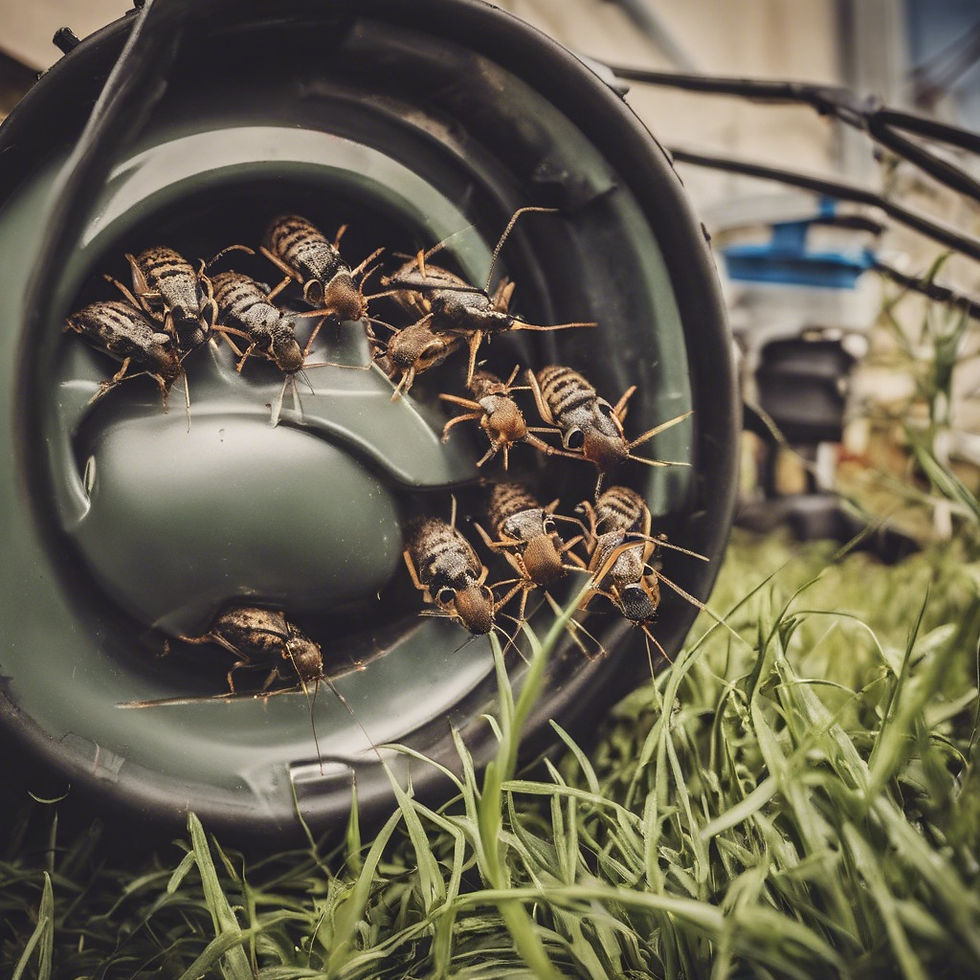"What Are The Best Tips For Growing Sunflowers In Your Garden?"
- mp50081
- Apr 22, 2024
- 3 min read
Have you heard of sunflowers?
Sunflowers, also known by their scientific name ‘Helianthus” are a genus of about 70 flowering plants in the daisy family.
These annual and perennial plants are native to the Americas.
Sunflowers have been valued for centuries for their unique appearance as well as their cultural significance.
Many people see sunflowers as spiritual flowers because of their similar appearance to the sun. Also sunflowers are always trying to find the light.
Sunflowers have nutritional value as well as ecological benefits.
Sunflowers can be a great addition to your garden. They’re not only beneficial for your soil, they’re also attractive to pollinators such as butterflies and bees.
Here’s a question that you might be asking!
How do I grow sunflowers in my garden?
1. Plant The Right Variety:

Sunflowers are found throughout the Americas. They're found in any sunny and dry open space, also they're often found as weeds.
Sunflowers are one of the easiest plants to grow from seed. They come in 70 different varieties.
Most sunflower varieties are annuals that die at the end of the growing season and have to be replanted every year. However there are others that are perennials, they only need to be planted once and they regrow every year.
Some sunflower varieties are pollinators, while others are not.
Pollinators attract beneficial insects such as bees and butterflies to your garden. The varieties that are not pollinators will not attract them.
Some varieties grow larger than others and they require more space between them when the seeds are sown in the ground.
The seeds are usually sown directly where they are going to flower. They're usually sown 2 inches (5 cm) deep. The amount of space between rows vary depending on what variety of sunflower is planted.
Smaller varieties are usually planted 11 inches (30 cm) apart and larger ones it's usually 17 inches (45 cm).
2. Choose The Right Location And Prepare Your Soil:

When you're planting sunflower seeds in your garden, keep in mind that they'll need plenty of sunlight when your sunflowers start coming up.
Make sure you pick a spot in your garden that receives full sun for most of the day.
Also, sunflowers do well in soil that's well drained and with good fertility. Keep in mind that your soil needs a pH of 6.0 to 7.5 for sunflowers to grow.
In order to get that ideal pH, you may need to mend your soil by adding compost and/or garden lime.
3. Plant At The Right Time Of The Year:

The time that sunflowers are usually planted varies depending on what climate zone you live in.
For example, if you live in New England, it's recommended that you plant your sunflower seeds at the middle or even the end of May.
By the middle of May, the last frost of the season occurs.
In hotter climates, sunflowers can be planted earlier than in New England.
Also, the time of year you should plant your sunflowers depends on the variety.
4. Provide Adequate Water:

Even though sunflowers are drought-resistant, you still need to properly water them.
When sunflowers are in their early growth stages, they require more water.
As sunflowers mature they need less water.
When they do need water, you need to water them deeply to encourage root development. Also keep in mind that overwatering mature sunflowers can cause root rot.
5. Pest Management:

When you're growing sunflowers, keep in mind that you might have to deal with common pests like aphids, slugs as well as caterpillars.
Protecting your sunflowers against pests doesn't require the use of toxic chemicals.
There are many forms of organic pest controls for protecting your sunflowers. These include insecticidal soap, sticky traps, beneficial insects and applying Bacillus Thuringiensis (BT).
Insecticidal soaps are formulated products sold specifically for insect control. It's only effective when it makes contact with the pest you want to get rid of after spraying it.
Sticky traps are made with a material of a particular color and has a sticky substance. Pests are drawn to that color and end up getting trapped.
Beneficial insects can either be brought in or drawn to your garden to protect your sunflowers. Along with bees and butterflies, sunflowers draw in other beneficial insects including Lacewings, Big eyed bugs, Ladybird beetles as well as Parasitoid wasps.
Bacillus Thuringiensis (BT) is a natural occurring bacterium found in your soil. Many types of BT are used to kill a specific insect or class of insects.
Have You Grown Sunflowers?
Please Like And Follow!
Sources:

Comments